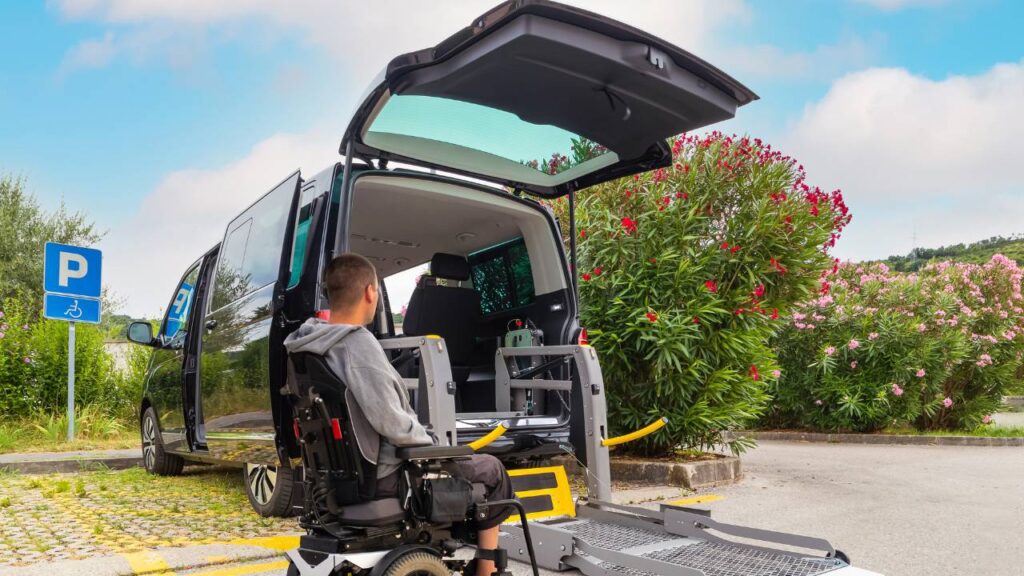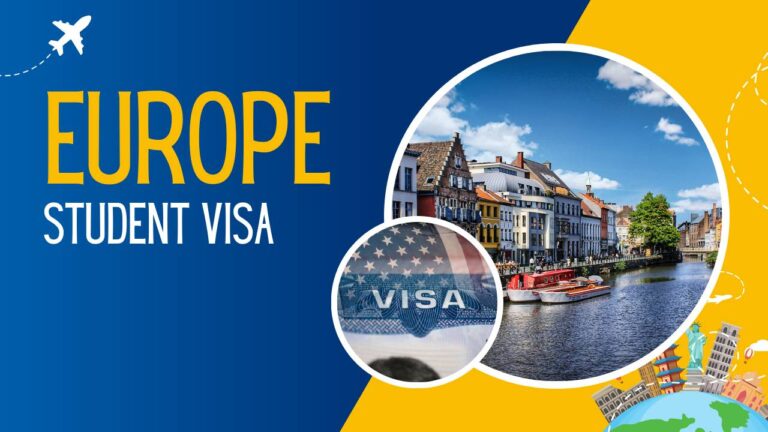Traveling through Europe is a dream for many — from strolling cobblestone streets in Italy to admiring the architecture of Paris, or cruising through the canals of Amsterdam. But for those using wheelchairs or with limited mobility, this dream can be clouded by accessibility concerns. Thankfully, with the rise of wheelchair accessible tours, inclusive travel is becoming a reality.
Best Cities to Visit in Europe for First-Time Travelers
This guide shows the best platforms, tour operators, accessible destinations, and insider tips to help you confidently book your next European adventure.
Top Platforms to Book Wheelchair Accessible Tours
Online platforms have transformed how travelers with disabilities explore the world. These websites and agencies do more than list travel options — they provide full-service support including transportation, accommodation, and personalized itineraries tailored to each traveler’s needs.
1. Wheel the World
Wheel the World is a global accessibility pioneer that has redefined what inclusive travel looks like. With coverage in over 40 countries, it’s one of the most detailed platforms available. Every destination comes with full accessibility profiles — think door widths, bed heights, bathroom photos, and terrain descriptions. Travelers can customize their itinerary or choose from curated packages. What’s truly unique is their “Accessibility Mapping Tool,” where users can mark specific needs and filter accordingly.
Their customer support team is also trained to guide travelers through every step, ensuring no details are overlooked — from hotel bathrooms to step-free restaurant access. For travelers with electric wheelchairs or specific medical equipment, Wheel the World also offers rental options and delivery services.
2. Sage Traveling
Founded by a wheelchair user, Sage Traveling specializes in wheelchair accessible tours in Europe with an authentic understanding of the travel challenges faced by those with mobility needs. The platform offers pre-planned accessible itineraries, port excursions for cruise travelers, private city tours, and custom vacation planning. It covers top European destinations like Athens, Paris, Rome, and London, among others.
What sets Sage Traveling apart is its deep research. Every tour is personally tested for accessibility, and you’ll find accurate details on slopes, surfaces, and restroom availability. They even offer “travel packages” that bundle accessible hotels, local transportation, and sightseeing.
3. Accessible Europe
Accessible Europe is a highly respected European-based agency that offers full packages for travelers with disabilities. Services include accessible hotel booking, airport transfers with adapted vans, equipment rentals, and professional guided tours in Italy, Spain, and France.
This company works closely with hotels and transportation providers to ensure every element of your trip is confirmed and verified. Their website features downloadable guides and destination-specific accessibility reports. For first-time accessible travelers in Europe, this platform offers peace of mind and personal care.
4. Limitless Travel
If you prefer escorted group tours with medical and care assistance, Limitless Travel is a top choice. Based in the UK, they offer all-inclusive wheelchair accessible tours to destinations such as the Italian Riviera, Spanish coasts, and even Norway. Their staff includes professional caregivers, nurses, and mobility-trained guides.
Each tour is accompanied by a fully adapted coach, step-free accommodations, and on-site care teams. This makes it perfect for older adults, solo travelers with higher care needs, or those recovering from recent surgeries or accidents.
Best Countries in Europe for Wheelchair-Friendly Tourism
While accessibility can vary across Europe due to historical architecture and infrastructure, several countries have made commendable progress toward inclusive tourism.
France
France is committed to inclusivity, especially in major cities like Paris, Nice, and Lyon. In Paris, major attractions like the Eiffel Tower and the Louvre have accessible entrances, lifts, and wheelchair-friendly paths. Public buses and many metro stations are equipped for wheelchair users, and several parks and gardens feature smooth, wide paths.
Paris also has wheelchair-friendly Seine river cruises, fully accessible museums, and hotels with certified accessible rooms. Many guided tours cater exclusively to travelers with mobility challenges, and accessible taxis (G7 Access) can be pre-booked for airport or local travel.
Italy
Italy, known for its historic landmarks and uneven terrain, might seem daunting — but that’s changing rapidly. Rome, Florence, Venice, and Milan are now equipped with wheelchair accessible tours that include stair-free Vatican Museum visits, gondola rides with portable lifts, and guided tours through Pompeii on wheelchair-friendly walkways.
Accessible public transport is improving, especially in Milan and Rome, where buses and trams are being adapted for low-floor boarding. Many churches, museums, and archaeological sites now include ramps and elevators to ensure everyone can appreciate their beauty.
Spain
Spain is a leader in accessibility in Europe. Cities like Barcelona, Madrid, and Valencia are designed with inclusive tourism in mind. Barcelona in particular boasts beach wheelchairs, accessible boardwalks, low-floor buses, adapted taxis, and ramps at nearly every attraction.
Tour companies offer accessible walking tours of Gaudi landmarks, flamenco shows, and even adapted mountain excursions. The city’s Metro system also features audible announcements, elevators, and wide gates for wheelchair users.
Germany
Germany combines modern efficiency with inclusive design. Berlin, Munich, and Hamburg offer comprehensive accessibility in public transport, parks, museums, and historical landmarks. Most attractions, including Berlin’s Museum Island and the Reichstag, are accessible with ramps, lifts, and assistance.
Germany’s tourism board offers extensive downloadable accessibility guides by city and region. There are even tactile walking paths and braille signage for travelers with multiple disabilities.
The Netherlands
Amsterdam is one of the most wheelchair-friendly cities in Europe. Its flat layout, adapted trams and buses, and wide sidewalks make exploration easy. While some canal houses remain inaccessible, many museums — including the Van Gogh Museum and Rijksmuseum — are fully accessible.
Accessible canal cruises with boarding ramps and adapted restrooms offer a unique way to see the city. Travelers can also enjoy scenic countryside tours to windmills and tulip fields via adapted transport.
Specialized Tour Operators for Wheelchair Accessible Travel
Beyond platforms, there are local and regional tour operators who deeply understand the landscape and offer curated experiences with accessibility at the core.
Accessible Travel Netherlands
Offering personalized itineraries throughout the Netherlands, this operator specializes in fully accessible day tours, museum visits, city walks, and countryside excursions. Their services include adapted transport with rear-lifts, mobility scooter rentals, and English-speaking guides trained in disability etiquette.
They also partner with local accessible hotels and assist in arranging everything from breakfast to medication storage in hotel fridges — making your trip stress-free.
Rome and Italy Group
This group has earned its reputation as a leader in Italy’s accessible travel scene. They offer a wide variety of wheelchair accessible tours in Rome, Naples, Florence, and the Amalfi Coast. Their Vatican tour is designed to avoid all stairs and includes lifts and accessible restrooms along the route.
They also offer accessible wine tastings in Tuscany, cooking classes, and multi-city packages. You can even rent beach wheelchairs and amphibious chairs for coastal holidays.
Barcelona Zero Limits
This Catalan-based operator organizes accessible cultural experiences, outdoor adventures, and equipment rentals in Barcelona and beyond. Their team includes sign language interpreters, physiotherapists, and personal care assistants — ideal for travelers with diverse mobility needs.
Barcelona Zero Limits also coordinates accessible surfing, diving, and sailing for adventurous spirits looking to enjoy the sea without limits.
What to Look for in an Wheelchair Accessible Tour Booking
Booking the right tour involves far more than picking a destination. Here are key factors to consider when planning your wheelchair accessible tours:
- Mobility Requirements: Identify whether you need a ramp, lift, beach wheelchair, or oxygen support, and make sure the provider can meet those needs.
- Photographic Evidence: Ask for photos of doorways, bathrooms, and entryways before confirming. Visuals often reveal more than descriptions.
- Accessibility Levels: Understand whether venues are “fully accessible,” “partially accessible,” or “not accessible” — the terms can be vague and misleading without clarification.
- Flexible Cancellation Policies: Health needs can change suddenly. Choose providers that offer flexible cancellation or postponement policies.
Apps and Booking Tools for Wheelchair Accessibility
Today, mobile apps are travel essentials for on-the-go accessibility support.
Access Earth
Access Earth provides user-generated accessibility ratings for hotels, restaurants, and attractions around the world. Each location is reviewed for ramp access, elevator availability, and bathroom accessibility, allowing you to plan every stop with confidence.
Wheelmap
Wheelmap is a free app with an intuitive interface that lets users tag and review public spaces based on their wheelchair accessibility. Locations are color-coded for easy scanning: green for fully accessible, yellow for partially accessible, and red for inaccessible.
Google Maps (Accessibility Layer)
Google Maps now includes accessibility options under settings. You can filter results by wheelchair-accessible entrances, see which metro stations have elevators, and even get step-free directions where available.
Tips for Booking a Smooth Wheelchair Accessible Tour
To maximize your experience, use the following strategies:
- Communicate Early and Clearly: Be specific about your needs, including chair dimensions, transfer ability, and assistance requirements.
- Document Everything: Save emails and confirmations about accessibility — they can be helpful in case of discrepancies or emergencies.
- Research Local Laws: In some countries, travelers with disabilities may have priority boarding or access to subsidies. Knowing your rights can enhance your experience.
Budgeting for Wheelchair Accessible Travel in Europe
While accessible travel can sometimes cost more due to specialized services, it doesn’t have to exceed your budget:
- Discounted Admission: Many European countries offer free or discounted entry for travelers with disabilities and their caregivers. Always carry medical proof of disability.
- Public Funding & NGOs: Look into non-profits or state grants that may help subsidize travel for people with disabilities. In the UK, organizations like Motability and Scope offer travel funding for certain trips.
- Travel Insurance: Opt for comprehensive travel insurance that covers medical assistance, accessible transport delays, and equipment damage or loss.
First-Hand Traveler Experiences and Reviews
Don’t underestimate the value of community reviews. Blogs like Curb Free with Cory Lee, Simply Emma, and Spin the Globe Travel offer in-depth reviews of destinations, tours, and hotels from a wheelchair user’s perspective. Many share packing lists, accessibility hacks, and emotional insights that guide others on their journeys.
Travel forums such as TripAdvisor’s Accessibility Forum or Facebook groups like Accessible Travel Club are great places to ask questions and read real traveler feedback before booking.
Take your time to research, communicate, and plan with care. With the right tools and partners, the experience of a lifetime awaits — because the world is far too beautiful to miss.
FAQs
1. What are wheelchair accessible tours in Europe?
Wheelchair accessible tours are guided or self-guided travel experiences in Europe specifically designed to accommodate travelers using wheelchairs or with mobility limitations. These tours include step-free routes, accessible transport, adapted accommodations, and trained guides.
2. Which websites are best for booking wheelchair accessible tours in Europe?
Top websites include Wheel the World, Sage Traveling, Accessible Europe, and Limitless Travel. These platforms specialize in inclusive travel, offering detailed accessibility information and personalized support.
3. Are major European cities like Paris, Rome, and Barcelona wheelchair-friendly?
Yes, many major European cities have significantly improved their infrastructure. Cities like Barcelona, Amsterdam, Berlin, Paris, and Rome now offer accessible public transport, adapted tours, and barrier-free tourist attractions.
4. What should I look for when booking an accessible tour?
Check for:
- Step-free access at all sites
- Accessible transportation
- Verified accommodations
- Roll-in showers and grab bars
- Support from trained guides
- Clear cancellation policies
5. Can I book private wheelchair accessible tours?
Yes, many providers offer private, fully customized accessible tours. These are ideal for travelers who want flexible schedules, one-on-one assistance, and tailored routes based on their personal mobility needs.
6. Is accessible transportation available across Europe?
In most major cities, yes. You can book wheelchair-adapted vans, accessible taxis, low-floor buses, and trains with lift services. Many tour providers include these in their packages.
7. Are there any mobile apps that help find accessible places in Europe?
Yes, apps like Access Earth, Wheelmap, and Google Maps Accessibility help find wheelchair-friendly hotels, restaurants, restrooms, and transit routes across Europe.
8. How far in advance should I book a wheelchair accessible tour?
It’s best to book 2–4 months in advance, especially during peak seasons, as accessible hotels and transport options are limited and fill up quickly.
9. Are accessible travel tours more expensive?
They can be slightly more expensive due to specialized transport, equipment rental, or personal assistance. However, discounts are often available at attractions, and packages help manage costs.
10. Can I rent mobility equipment while traveling in Europe?
Yes, most major cities offer wheelchair, scooter, and lift rentals, which can be delivered directly to your hotel or tour location. Many tour companies help arrange this in advance.






